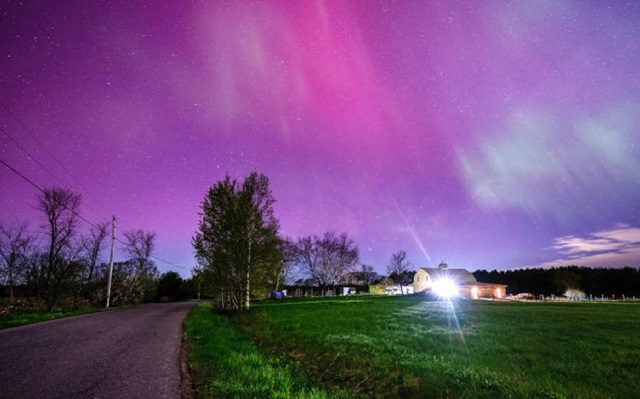BTN News: The Space Weather Prediction Center of the National Oceanic and Atmospheric Administration (NOAA) has predicted a moderate solar storm for the afternoon of July 24. This event is classified as a G2-level storm and will cause a stunning display of the Northern Lights, also known as the aurora borealis. Charged particles were ejected from the Sun on July 21, and they will soon interact with Earth’s magnetic field. This interaction will create bright auroras visible in parts of the United States, which is unusual for these locations.
NOAA says that the aurora borealis could be seen in northern and mid-latitude states, from New York to Idaho. This prediction means the lights will be visible much further south than usual, offering a unique chance for people in these regions to see them. Normally, the Northern Lights are seen near the poles, but this storm is strong enough to make them visible in lower latitudes.
A G2-level solar storm is considered moderate, but it can still produce beautiful light shows. For example, a stronger G4-level storm in May created auroras in unexpected places like Mexico. This current storm, though not as strong, will still affect Earth’s ionosphere enough to create the beautiful lights. NOAA assures us that this event will not harm communication systems or infrastructure.
Solar storms happen when the Sun releases a coronal mass ejection (CME), which sends out clouds of charged particles. If these particles reach Earth, they hit our planet’s magnetic field and cause a solar storm. Earth’s magnetic shield protects us from serious harm but also directs these particles towards the poles. There, they interact with gases in the atmosphere to create the bright colors of the aurora.
For now, North America is the only area confirmed to see the auroras on July 24. However, there is a chance that people in other countries might also see them. Sky watchers should check local weather updates for more information.
If you want to photograph this event, there are some tips to follow. To take good photos of the Northern Lights, go away from city lights to avoid light pollution. Since the aurora covers a large part of the sky, use a tripod to keep your camera steady. Use a lens with a wide aperture and set a long exposure time, up to 25 seconds, to capture the details of the auroras. Be patient, as the lights might be faint and hard to see at first. A slight glow in the sky usually means the aurora is there, and your camera can capture it better than your eyes can.
In summary, the G2 solar storm on July 24 gives people in parts of the United States a rare chance to see the Northern Lights. With the right preparations for viewing and photography, you can enjoy this amazing natural light show. Keep up with the latest updates to make sure you have the best experience possible.


